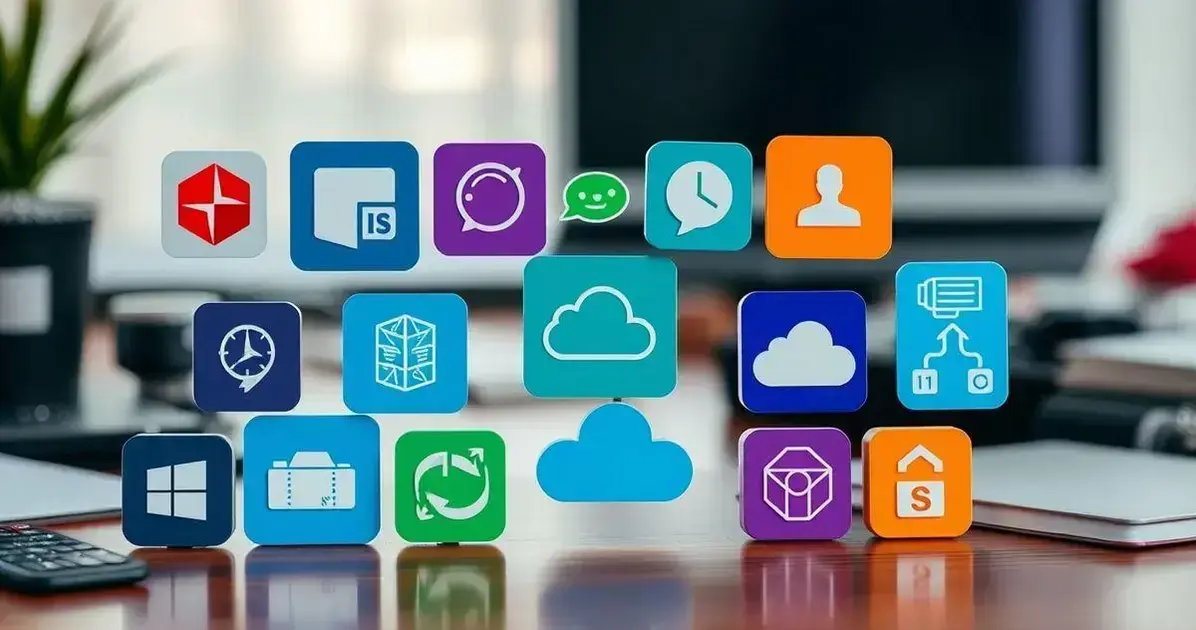Announcements
Smart work digital is transforming the way we think about productivity and efficiency in the workplace.
As more individuals and organizations adopt smart work digital practices, they experience enhanced collaboration, improved time management, and greater overall effectiveness.
In this article, we’ll dive into the core components of smart work digital, explore the benefits it brings to modern teams, and discuss practical tools and strategies to implement these concepts effectively.
Announcements
What is Smart Work Digital?
Smart Work Digital refers to the innovative practices and tools that enhance workplace productivity through digital transformation. This approach focuses on leveraging technology to improve communication, collaboration, and efficiency in a modern work environment. By emphasizing flexibility and smart use of resources, Smart Work Digital enables teams to work smarter, not harder.
Components of Smart Work Digital
Several elements come together to define Smart Work Digital. These include cloud computing, project management tools, and collaboration software that facilitate seamless interaction among team members. Companies can integrate these tools to create a workspace that supports remote work, encourages creativity, and boosts employee morale.
Announcements
Key Features
One of the key features of Smart Work Digital is its adaptability. Organizations can tailor tools and practices to fit their unique needs, ensuring that everyone stays on the same page. Features like real-time updates, digital communication platforms, and automated workflows help streamline processes, making it easier for teams to focus on their goals.
Examples in Practice
Many companies are already embracing Smart Work Digital methodologies. For instance, a remote team might use video conferencing tools to hold regular check-ins while relying on shared online platforms for project management. This not only keeps everyone connected but also allows for efficient tracking of tasks and responsibilities.
In summary, Smart Work Digital is about using technology to redefine how work is done. It enables organizations to create a more dynamic and engaged workforce, ultimately leading to increased productivity and success.
Benefits of Smart Work Digital
The benefits of Smart Work Digital are numerous, making it an essential approach for modern workplaces. First, it significantly enhances productivity. By utilizing digital tools, teams can automate repetitive tasks, allowing employees to focus on higher-level work that requires creativity and problem-solving.
Improved Communication
With Smart Work Digital, communication becomes more efficient. Real-time messaging platforms and video conferencing tools allow for instant discussions, which eliminates delays and fosters collaboration among team members.
Flexibility and Remote Work
Another benefit is increased flexibility. Employees can work from anywhere and on their own schedules, provided they meet deadlines. This flexibility leads to higher job satisfaction and better work-life balance.
Cost Savings
Smart Work Digital practices can result in significant cost savings for organizations. By embracing remote work and digital tools, companies can reduce overhead costs associated with physical office space and resources.
Enhanced Collaboration
Collaboration tools such as shared documents and project management software improve teamwork. Team members can work together in real time, even if they are miles apart, creating a more cohesive work environment.
Data-Driven Decisions
Lastly, Smart Work Digital allows for data-driven decision-making. By analyzing performance metrics and gathering data from various sources, organizations can make informed choices that drive growth and innovation.
In summary, adopting Smart Work Digital is crucial for companies looking to stay competitive in a rapidly evolving marketplace. The combination of enhanced productivity, improved communication, flexibility, cost savings, collaboration, and data-driven insights truly unlocks the potential of modern workplaces.
Tools for Smart Work Digital Success

To thrive in a Smart Work Digital environment, specific tools are essential for success. These tools help teams work more efficiently and collaborate effectively, ultimately enhancing productivity. Here are some popular tools that can propel your organization towards achieving Smart Work Digital goals.
Project Management Software
Project management tools like Trello or Asana allow teams to organize projects, assign tasks, and monitor progress. They create transparency within teams, making it easier to manage deadlines and deliverables.
Communication Platforms
Effective communication is vital for Smart Work Digital. Platforms like Slack or Microsoft Teams enable instant messaging, file sharing, and video calls. These platforms keep all team members connected, whether remote or on-site.
Time Management Tools
Time tracking tools such as Toggl or Clockify help employees manage their time effectively. They allow workers to monitor how much time they spend on tasks, leading to better time allocation and productivity insights.
Cloud Storage Solutions
Most organizations rely on cloud storage solutions like Google Drive or Dropbox for easy file access. These tools enable team members to share and collaborate on documents in real-time, regardless of their physical location.
Collaboration Tools
Collaboration platforms such as Miro or Figma allow teams to brainstorm and design together. These tools facilitate creativity and innovation, providing a virtual space for team members to express ideas visually.
Automation Tools
Lastly, automation tools like Zapier can streamline repetitive tasks by connecting various applications. By automating mundane processes, teams can focus on more critical work that drives results.
Utilizing these tools effectively can unlock the benefits of Smart Work Digital, making operations smoother and more efficient for teams across the organization.
Implementing Smart Work Digital in Your Team
Implementing Smart Work Digital in your team requires a strategic approach that focuses on engagement and gradual change. Here are some essential steps to successfully integrate these practices.
Assess Team Needs
Start by evaluating the specific needs of your team. Conduct surveys or hold meetings to understand which tools and practices could enhance performance. Knowing what your team values will help tailor the implementation.
Select the Right Tools
After assessment, choose the appropriate tools that align with your team’s goals. Consider options like project management software, communication platforms, and collaboration tools. Implementing effective tools is crucial for enabling a Smart Work Digital environment.
Provide Training
Training is vital for a successful transition. Host workshops or training sessions to teach team members how to use the selected tools effectively. This boosts confidence and encourages adoption, ensuring everyone is on the same page.
Encourage Feedback
As you begin implementing Smart Work Digital, actively seek feedback from team members. This input can guide adjustments and improvements, making the transition smoother and more effective.
Monitor Progress
Track how the team adapts to new tools and practices. Set specific metrics to evaluate productivity and collaboration improvements. Monitoring will help you identify areas of success and those needing additional support.
Foster a Culture of Flexibility
Finally, promote a culture that values flexibility and innovation. Encourage team members to share best practices and innovative ideas that can enhance the Smart Work Digital experience. Celebrating small wins will motivate everyone to buy into the process.
Challenges of Smart Work Digital
While there are many benefits to adopting Smart Work Digital, several challenges can arise during the transition. Understanding these challenges can help teams navigate them effectively.
Technology Adoption
One significant challenge is the technology adoption curve. Team members may be resistant to change or struggle to learn new tools. This can lead to decreased productivity in the short term as employees adjust to the new systems.
Data Security Concerns
Data security is another crucial issue. As teams move to digital platforms, the risk of data breaches increases. Organizations must ensure that proper security measures are in place to protect sensitive information.
Communication Breakdowns
In a digital work environment, communication breakdowns can occur. Misunderstandings can happen when communication transitions from in-person to digital. It’s vital to establish clear communication protocols to avoid confusion.
Overwhelming Choices
The wide range of available tools can be overwhelming. Teams may have difficulty choosing the right tools for their specific needs. It’s essential to research and select platforms that genuinely add value rather than complicating workflows.
Work-Life Balance Issues
Work-life balance can become strained in a Smart Work Digital environment. With the ability to work from anywhere, employees might struggle to separate work from personal life, leading to burnout. Encouraging boundaries and time management practices is vital.
Maintaining Company Culture
Finally, maintaining company culture can be challenging with remote teams. Without regular face-to-face interactions, team bonding may suffer. Organizations need to be proactive in creating virtual experiences that foster team connections.
Future Trends of Smart Work Digital

The future of Smart Work Digital holds exciting trends that can reshape how teams work and collaborate. Here are some key trends to watch for:
Increased Use of Artificial Intelligence
Artificial Intelligence (AI) will play an even bigger role in Smart Work Digital. Tools powered by AI will automate more tasks, analyze data to improve decision-making, and personalize workflows for individual team members. This can lead to significant productivity boosts.
Remote Work as a Norm
Remote work is here to stay. Many companies will continue to offer flexible work arrangements. This shift will encourage organizations to invest in tools that promote collaboration, communication, and engagement among remote teams.
Focus on Data Privacy and Security
As digital tools become more widespread, a strong focus on data privacy and security will emerge. Companies will need to implement robust security measures and educate employees about data handling to protect sensitive information.
Interconnected Workspaces
The future will see more interconnected digital ecosystems. Various tools and applications will integrate seamlessly, allowing team members to move from task to task without disruption. This interconnectedness will streamline workflows and enhance collaboration.
Virtual and Augmented Reality
Virtual Reality (VR) and Augmented Reality (AR) may become key components of collaboration tools. These technologies can create immersive experiences for team meetings, design reviews, and training sessions, making collaboration more interactive and effective.
Emphasis on Employee Well-Being
Future Smart Work Digital practices will prioritize employee well-being. Companies will increasingly look for ways to support mental health and work-life balance, such as through digital wellness programs and flexible scheduling.
By staying ahead of these trends, organizations can ensure they remain competitive and optimize their operations in an ever-evolving digital landscape.
FAQ – Frequently Asked Questions about Smart Work Digital
What is Smart Work Digital?
Smart Work Digital refers to utilizing digital tools and practices to enhance productivity, collaboration, and efficiency in the workplace.
What are the benefits of adopting Smart Work Digital?
The benefits include increased productivity, improved communication, greater flexibility, cost savings, enhanced collaboration, and data-driven decision-making.
Which tools are recommended for Smart Work Digital success?
Recommended tools include project management software like Trello, communication platforms like Slack, time management tools like Toggl, and cloud storage solutions such as Google Drive.
How can I implement Smart Work Digital in my team?
Begin by assessing team needs, selecting appropriate tools, providing training, encouraging feedback, monitoring progress, and fostering a culture of flexibility.
What challenges might I face with Smart Work Digital?
Challenges can include technology adoption issues, data security concerns, communication breakdowns, overwhelming tool choices, work-life balance issues, and maintaining company culture.
What are some future trends of Smart Work Digital?
Future trends include increased use of AI, remote work normalization, stronger data privacy focus, interconnected workspaces, Virtual and Augmented Reality integration, and enhanced employee well-being.







